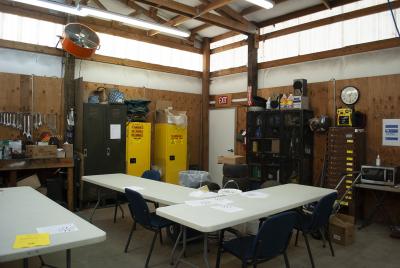Findings - 2021 Facilities Assessment Project
In 2021, the City of Corvallis conducted a Facilities Needs Assessment to study the condition and operational efficiency of its portfolio of public buildings. The assessment examined a few areas:
- The capacity of the existing facilities
- The locations and workflows of employees and public as they use these facilities
- Energy efficiency
- Safety
- Gender equity and accessibility
- Population growth impacts
- Changes in regulations and technology
- New approaches to providing services
And did a comparison against ‘best practices’ to ensure that the community’s facilities are serving the long-term interests of the community.
The first step the consultants took in the Facility Needs Assessment was an analysis of the current City work spaces. The consultant team interviewed each department to gain a better understanding of how the spaces function today. They also assessed whether the current facility would be able to accommodate the future workforce. The consultants visited each site for a first-hand look at how spaces were being used. They used the key findings from these interactions to rate the site on condition, quality, and functionality. Those individual criteria scores were averaged to come up with an overall rank per location. The assessment revealed significant challenges, with 12 of the 17 sites having a ranking below 3, and an average ranking for the portfolio of 2.58.
While each location has challenges and concerns unique to the type of services delivered from that building, there were common problems across all sites. Forty-seven percent of the facilities are of an age that exceeds the average useful life of a building, which is 50 years, and only two were constructed within the last 20 years. The majority of the facilities do not support modern operations or current trends in sustainable, resilient, equitable work places. In general, the consultants found that Corvallis’ portfolio lags behind other, similar cities, which not only presents hurdles to effective service delivery but also a challenge to employee recruitment and retention.
The second step the consultants took was to determine the facility size that is necessary to provide adequate space for the City’s staff, materials, assets, and storage needs 20 years from today. This analysis resulted in square footage projections by building and by department for those buildings that house more than one department. The consultants found that City buildings are undersized today and that a 77% increase in space across the portfolio was needed to bring the facilities up to industry standards. Another 8% increase in space will be needed to accommodate service delivery in 20 years, for a total deficiency of 85%.
The third step in the consultant process was the development of alternative solutions to address the challenges they uncovered. A set of guiding principles were drawn from the community and City Council’s goals and objectives for Corvallis, as represented in the Imagine Corvallis 2040 Vision and the City Strategic Operational Plan Policy Priorities. An alternative was not considered viable if it did not align with the criteria in the Guiding Principles. The consultants further reviewed the viable options for construction viability and cost to arrive at a recommended solution per location.
The final step in the Facility Needs Assessment process was the development of a prioritization framework for the facility solutions. The consultant team used technical data gathered in the previous steps to formulate a priority plan about how the City may want to organize its efforts to address the many facility needs identified. Project prioritization also can help guide decisions regarding interim investments of limited facility maintenance resources. Facilities that are likely to remain in the portfolio for a longer period of time may warrant investments in maintenance projects, where facilities that are likely to be replaced or renovated in the short term may not.
The consultant’s suggested priorities did not take into account how funding opportunities or organizational and community objectives may influence the actual phasing of facility improvements in the future. However, the consultant’s recommendation did provide a technical baseline for those future City considerations and are a valuable tool for the organization.
The culmination of this work effort was a Citywide Facilities Strategy with recommendations for a set of conceptual-level facility projects to address the deficiencies noted through the assessment.
Click here to go back to the Facilities Needs Assessment page.
| Mark Shepard | City Manager | 541-766-6418 | city.manager@corvallisoregon.gov |
